US Navy Uniform Profile
Enlisted Men's Gray Working Uniform
(1943-1947)
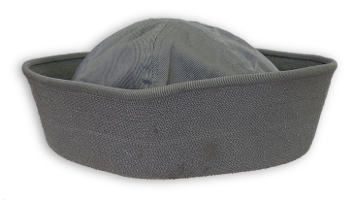
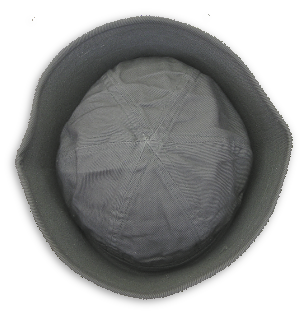
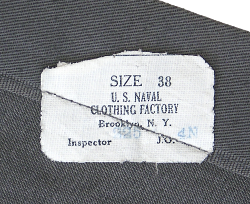
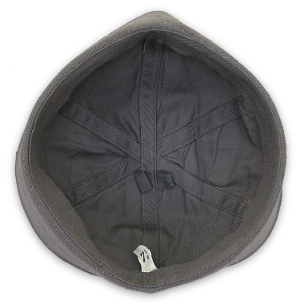
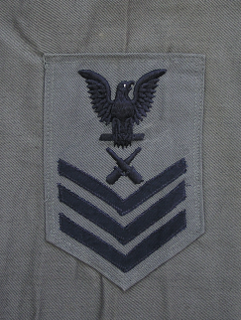
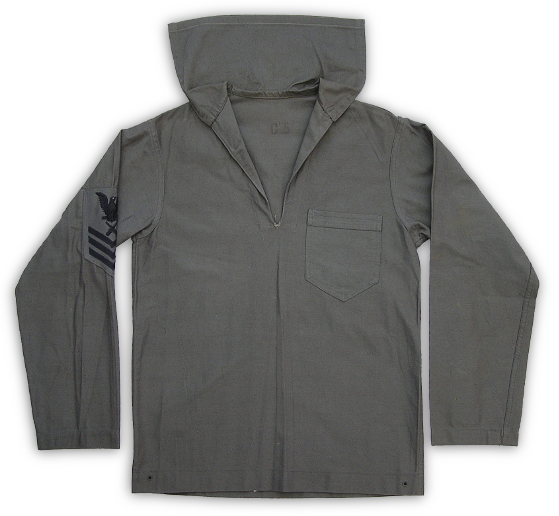
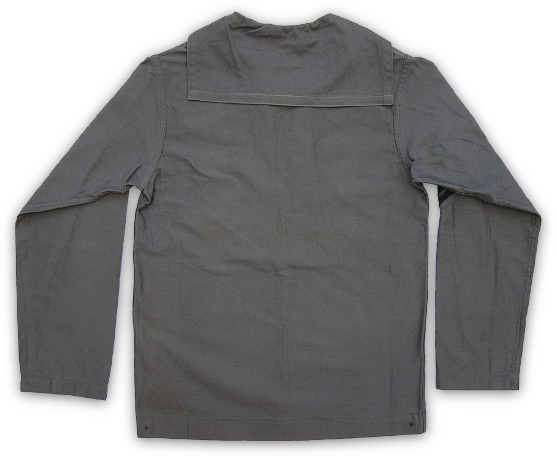
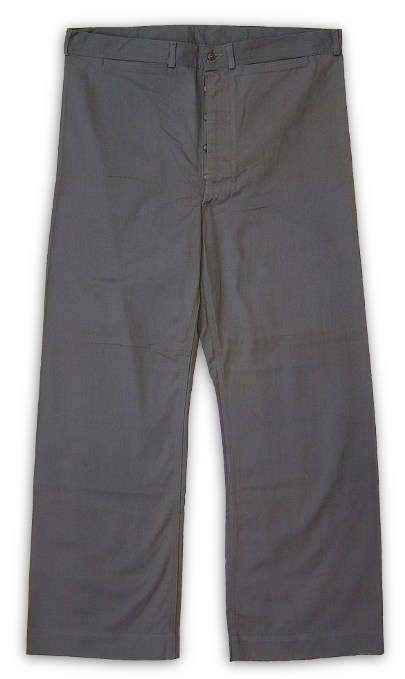
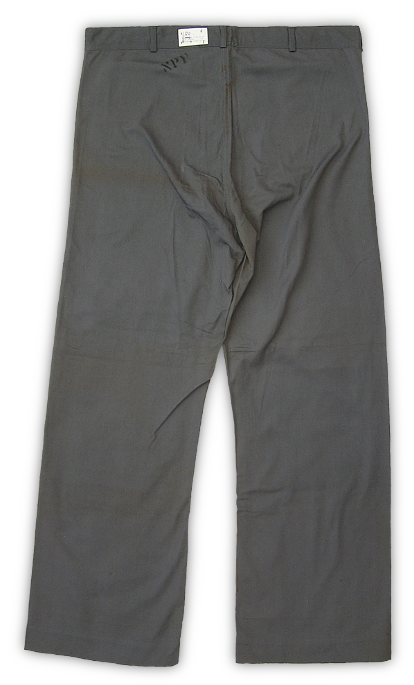
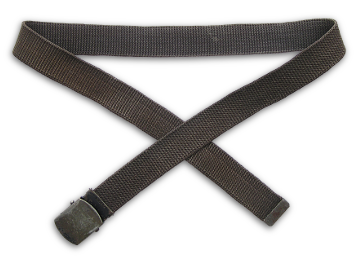

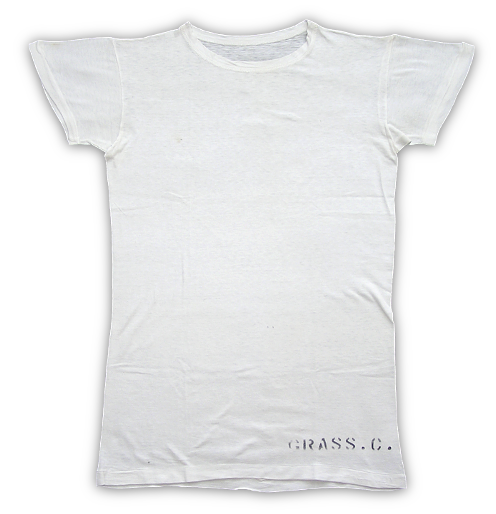
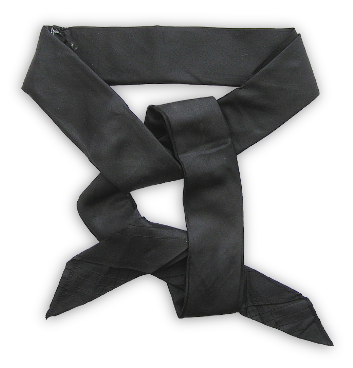
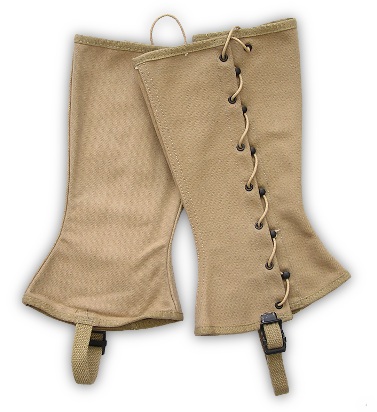
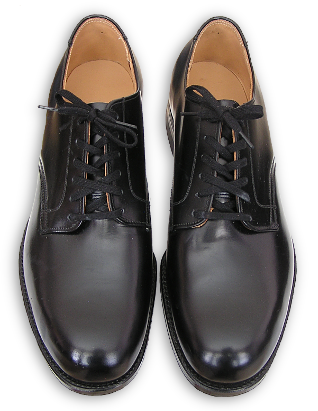
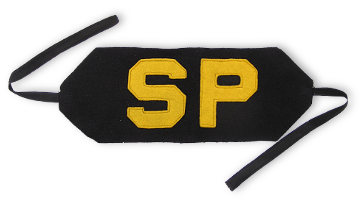
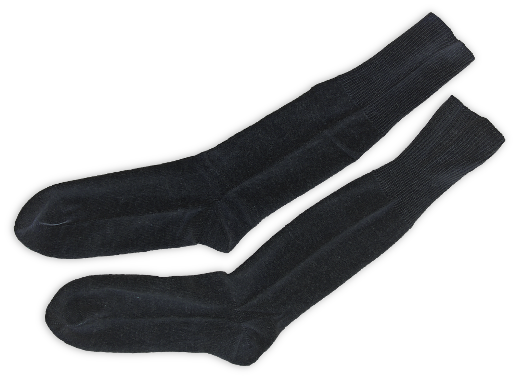

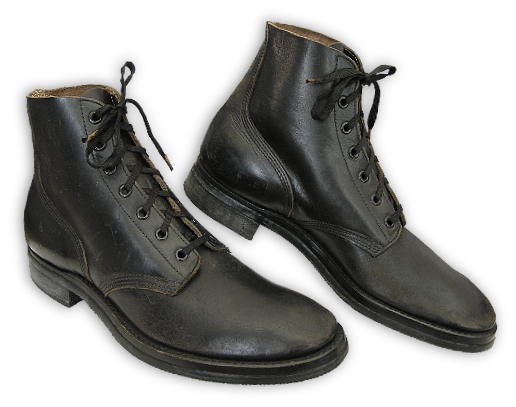
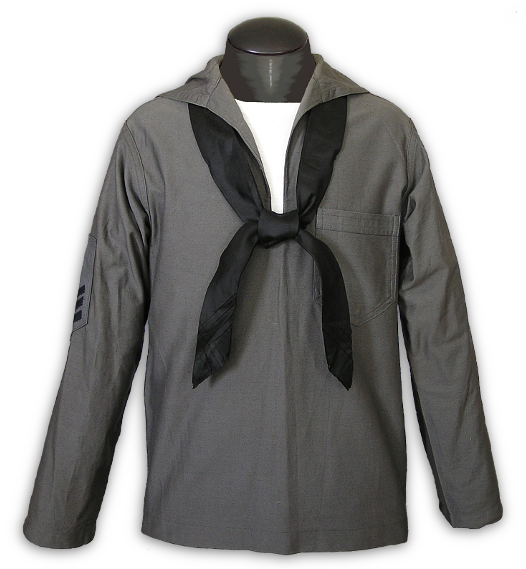

Enlisted Men's Gray Working Uniform
Authorized by the US Navy in September 1943, the enlisted men's gray working uniform of WW2 was the last in a sequential rollout of new summer working uniforms preceded by versions for both officers and CPOs respectively. It was intended that the new uniform be worn afloat where the gray color matched the paint scheme used on ships and would offer some camouflage protection, especially where groups of men were congregated. Another desirable aspect of the gray uniform was that the fabric showed considerably less soiling compared to that of the undress white uniform it was intended to replace. Additionally, in some instances the gray uniform was expected to be worn in lieu of the denim work uniform thus reducing the overall attrition of the denim type.
The Navy's gray uniforms introduced during WW2 enjoyed neither longevity nor complete acceptance and use. A number of reasons caused this situation to develop. One was the natural and expected resistance to change when replacing well-liked, distinctively colored, traditional uniforms with a more utilitarian and subdued design. Additionally, changeover was not instantaneous; existing designs continued to be worn while the new gray uniform was gradually being introduced. Wearing of old and new uniforms was allowed until older stocks were used up and uniforms already purchased were worn out. Another factor was the problem of re-outfitting the entire Navy with a new uniform that utilized the same fabrics that were used in other designs with higher priorities assigned to them. Combined, these reasons ensured that during the War the gray uniform program would never be fully implemented. Of the three gray uniforms, the enlisted men's type would have the shortest production lifespan and service life, and ultimately only be issued to a relatively small contingent of men within the Navy. As a result, it is the least known and encountered of the gray uniforms.
When the Navy announced that enlisted men would follow suit with a gray working uniform in September 1943, procurement of the necessary uniform items (jumper, trousers, and hat) was in full procession. Uniform items were contracted from clothing manufacturers as well as produced at the Navy Clothing Factories. Rather than being purchased by the individual like in the case of officers and CPOs, enlisted men's uniforms were issued directly by the Navy in accordance with prescribed clothing allowance standards. It should be noted that the gray uniforms were, like most Navy uniform items, also procured and worn by the Coast Guard and other maritime services. Unlike the previous gray uniforms, a mass rollout was planned for the enlisted version, but only after sufficient stocks of the new uniform could be accumulated.
Approximately six months later, in March 1944, the Navy abruptly announced that plans for the enlisted men's gray uniform were to be cancelled. At the time, the need for olive drab cotton twill combat uniforms was cited as the primary reason. This announcement certainly coincided with the worldwide ramp-up of offensive operations against Axis forces as well as the introduction of new combat uniforms that required a similar type of material for production.
Between September 1943 and the spring of 1944 a significant quantity of enlisted men's gray clothing had been produced and the question became what to do with it. Even if enough had been produced to outfit the men afloat, there would be no replacements forthcoming. So, in the spring of 1944 the Navy made several new announcements regarding the direction of the gray uniform program. Among these were that officers and CPOs would continue to wear the gray uniform and authorization was given for chief cooks and chief stewards to also wear gray. Additionally, it was announced to the press that the enlisted men's gray uniform would become the new summer uniform of the Permanent Shore Patrol. Surviving uniforms seem to suggest that at least some enlisted men afloat were outfitted with the gray work uniform before the new announcements were made.
The Permanent Shore Patrol was a shore based police force established by the Navy in 1942 in response to the increased policing needs of the rapidly growing military. The force operated at bases and installations all around the country and worked with other law enforcement agencies to maintain order where there was a large military presence in the area. This organization should not be confused with the regular shore patrol activities carried out by ship personnel when a vessel arrived at port and men were granted liberty. Although permanent shore patrol personnel also wore the SP armband, they could be distinguished from ship personnel by the rate badge they wore that displayed a specialty mark consisting of an S inside a diamond. They also wore a police type badge on the left breast and usually carried a sidearm.
Classified as summer wear, the gray uniform used the same 7.7 ounce cotton twill fabric used for the undress white uniform. The color was described by the Navy as being slate gray. Navy literature stated the enlisted gray uniform and white uniform were the same design. However, a few minor differences can be discerned between the two jumpers. The gray jumper did not have loops located at the front and rear of the neck to help secure the neckerchief as did the white jumper. Also, the length of the rear flap was about half that of the white jumper. Other than those minor features the gray and white jumpers were the same close fitted, waist-length designs with a single, small patch pocket located on the left breast. Manufacturer labels were sewn into the skirt hem on the inside of the garment.
A white, short-sleeve summer t-shirt was typically worn underneath the jumper. The top of the t-shirt was visible at the front due to the low vee neckline of the jumper. Though the neckerchief was not usually worn with a work uniform, it is presented here as part of the uniform. This is supported by period photos that show the neckerchief being worn with the permanent shore patrol version of the uniform. Rates were worn between the shoulder and elbow and either on the right or left arm depending on the branch of service. A shore patrol brassard, which simply showed the letters SP, was worn between the shoulder and elbow on the arm opposite the rate.
In every respect, the gray trousers were the same design as the undress white trousers. They had a five button fly opening and were unlined. Two small, internally hung pockets were located at the front on either side of the fly and just underneath the waistband. There were no rear pockets. The trousers were cut with wide legs and a roomy seat that allowed for easy movement. Manufacturer labels were sewn onto the outside of the rear waistband. The standard Navy black web belt with sliding buckle was worn with the gray trousers.
The gray hat was cotton and had a full brim. It was the same design as the standard enlisted man's white hat of the WW2 era. The only labeling consisted of a small, cloth size label that was located on the inside of the hat. On the inside, there were two small loops used to tie the hat to a laundry line for drying. This hat was typically worn with the brim turned up. When worn in this manner the hat resembled a cup thus acquiring the nickname "Dixie Cup".
Black low quarter shoes of the standard navy design were worn with this uniform along with standard issue dark blue socks. For field duty, black high-top shoes with canvas leggings were worn to protect the lower extremities. Through 1942, high-top shoes had leather outsoles and were lined on the inside. Thereafter, they were constructed with rubber outsoles and were unlined, much like the standard field shoe.
Eventually, in the summer of 1947, the Navy announced that the gray enlisted man's working uniform had been removed from the Permanent Shore Patrol's wardrobe. Thus an end came to one of the least known American uniforms of World War II. While the uniform was clearly addressed in Navy orders and publications of the time and acknowledged in uniform histories since, period photographs of it in use are scarce and surviving examples are seldom encountered.